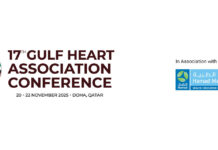Bristol Robotics Laboratory makes a device that can do a clinical breast examination (CBE). They were able to apply some forces that are like human examiners. Moreover, it can detect lumps at greater depths using sensor technology.
This device could be a source of revolution for women, giving them access to clinical breast examinations since they are located in easily accessible facilities. For example, health centres and pharmacies provide accurate results.
The lead author George Jenkinson explained,
There are conflicting ideas about how useful carrying out Clinical Breast Examinations (CBE) are for the health outcomes of the population. It’s generally agreed upon that if it is well performed, then it can be a very useful and low risk diagnostic technique.
Jenkinson added,
There have been a few attempts in the past to use technology to improve the standard to which health care professionals can perform a CBE by having a robot or electronic device physically palpate breast tissue. But the last decade or so of technological advances in manipulation and sensor technology mean that we are now in a better position to do this. The first question that we want to answer as part of this is whether a specialized manipulator can be demonstrated to have the dexterity necessary to palpate a realistic breast size and shape,
The team used a 3D printing method, computerized numerical control techniques, and a combination of lab experiments. Moreover, they simulated experiments on silicone breasts and their digital clone. They were both modelled by a volunteer at the Simulation and Modeling in Medicine and Surgery research group at Imperial College London.
Simulations enabled the team to perform thousands of palpations. They also tested multiple hypothetical scenarios. For example, a difference in efficacy using two, three, or four scenarios at a time. Moreover, they could carry out experiments on silicone breasts in the labs, demonstrating the accuracy of the stimulations. In addition, discover the forces behind the real equipment.
Jenkinson added,
We hope that the research can contribute to and complement the arsenal of techniques used to diagnose breast cancer, and to generate a large amount of data associated with it that may be useful in trying to identify large scale trends that could help diagnose breast cancer early.
One advantage that some doctors have mentioned anecdotally is that this could provide a low-risk way to objectively record health data. This could be used, for example, to compare successive examinations more easily, or as part of the information packet sent to a specialist if a patient is referred for further examination.




